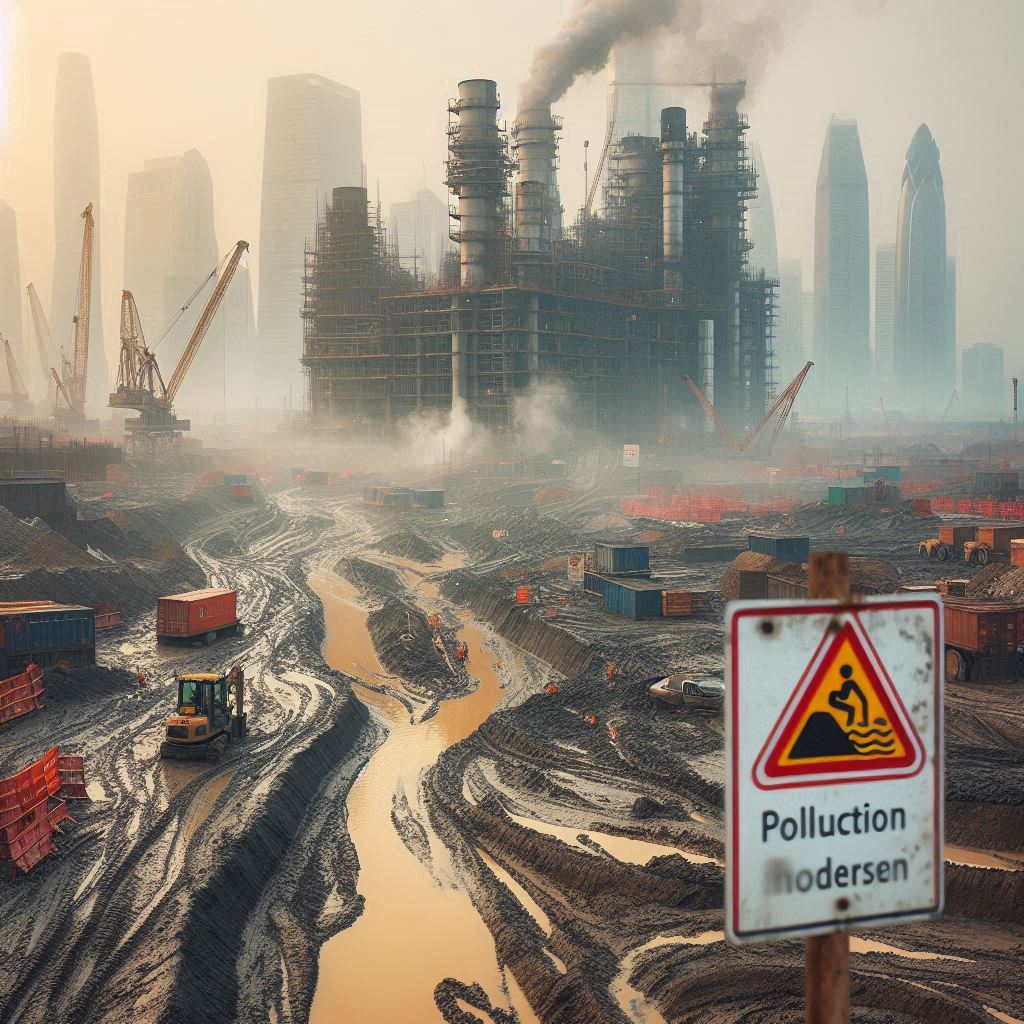It’s no secret that construction is a resource-intensive business that has a high environmental impact. A substantial amount of water pollution comes from this industry. Unless urgent action is taken, the World Bank estimates that construction waste would increase by 70% by 2050.
In addition, it is one of the sectors that uses the most water. Water is essential at every stage of the construction process, from mixing the concrete to cleaning the equipment to moistening the dry surfaces. Contrary to popular belief, construction pollutes the environment more than any other business. The construction business cannot overlook pollution as a problem. Air, water, and noise pollution are the three main types of pollution to be mindful of. If the construction industry does not take precautions to manage hazardous trash, it can have a direct impact on site workers and others who live nearby. Some of the world’s most pressing health challenges are associated with contaminated bodies of water, such as rivers, lakes, reservoirs, and oceans. This also includes harming their health in an irreversible way, with a worrying relationship between pollution and cancer.
Toxic compounds end up in water bodies including rivers, lakes, and oceans, causing pollution. Pollution might be visible on the surface or deposited on the bed, or it can be invisible to the naked sight, such as chemicals dissolved in water. Construction activities frequently include the use of dangerous chemicals and contaminants, which, if not properly controlled, might wind up in the water table.
The following are examples of common construction sources that contribute to air pollution:
- Loose Dust Rodi Reta
- Diesel and oil.
- Cement.
- Glues.
- Paints.
- Other toxic chemicals.
As a result of runoff from building activities, all of these toxins have the potential to wind up in water. Pollutants can enter the water system in a variety of ways, including drains, soil seepage, and runoff into rivers and lakes.
Consequences of Water Pollution
People
Pollutants from building projects have the potential to contaminate groundwater. VOCs, paints, glues, diesel, oils, other toxic compounds, and cement are some of the construction contaminants that can pollute the water. The immediate result is turbidity in runoff water, which affects surface and groundwater (since some runoff water may seep into the subsoil and reach groundwater). Because groundwater is more difficult to treat than surface water, there is a possibility that certain contaminants will be eaten as a source of human drinking water. When ingested through contaminated water supplies, chemical pollutants like arsenic and mercury can cause major health problems, including cancer.
Environment
Water contaminated by contaminants produced by the building industry is a severe environmental threat. When pollution enters a water system, it can injure or kill fish and animals that live there or drink from it. This has the potential to upset the entire ecosystem of animals, plants, microbes, and fungi, resulting in the extinction of many species.
Reducing Water Pollution

To help you reduce your pollution contribution, we’ve put together a list of tips that can be implemented:
- Keep an eye on how you’re managing and disposing of garbage on the job site, and make improvements if necessary. To prevent the spread of waste, make sure it is properly disposed of.
- Sand and cement, for example, should be kept secure. Materials must be stored in a location where they will not be washed into waterways or drains. Packed Fine Aggregates, Coarse Aggregates, and Plastering Sand are the ground breaking products developed by 405 Aggregates. These products are available in 40 kilogram packaging and ensures quality and quantity while also being environmentally friendly by offering Dust, Rori, and Reta in sealed Branded bags.
- To keep garbage from getting into the water, cover all drains.
- Always keep the site’s road and footpath clean. This will keep silt and other pollutants out of bodies of water.
- Collect and treat any wastewater you produce in the proper manner.
- Purchase materials in a planned manner or in such a way that they can be used elsewhere. The 405 Universal Stainers, for example, help to reduce waste by allowing the painter to module white paint in the color of his choice rather than wasting away leftover paint from premixed paint that can only be used on specific walls or ceilings.
- Most importantly, construction companies can reduce water pollution and increase sustainability by adhering to environmental guidelines established by their local governments — as well as by voluntarily adopting more environmentally sound practices.
CONCLUSION
The building industry must accept responsibility for monitoring and limiting the pollution it generates collectively. Being aware of how much garbage and contaminants your work activities produce, as well as the implications, is one of the most straightforward steps you can do. By increasing their environmental knowledge, construction enterprises can reduce their water footprint. To ensure a cleaner planet and safe rivers, the building industry has an even greater environmental duty than ever before.
We at 405 Gyp Aggregates Co. believe that proper enforcement, incentives, and education, as well as strong citizen participation, can significantly reduce construction pollution. We’ve begun to do our part by developing environmentally friendly products. It is past time for all of us to take responsibility for saving our environment by using products that cause no harm while performing their functions optimally.
